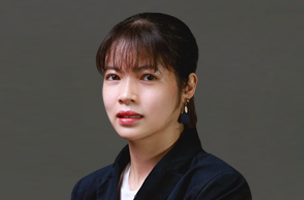Franchise in MYANMAR
Bud & Prairie are profusely expert and experienced to advise and assist you with franchising related matters.
- Legal Framework
- Lack of Specific Franchise Law: Myanmar does not have a specific franchise law. However, franchising is regulated under a combination of general laws, including contract law, intellectual property law, and foreign investment regulations.
- Contract Law: Franchise agreements are governed by Myanmar’s Contract Act of 1872. This act provides the legal framework for the enforcement of contracts, including franchise agreements.
- Intellectual Property Law: Intellectual property (IP) rights, such as trademarks and patents, are crucial in franchising. The recent updates in Myanmar’s IP laws (e.g., the Trademark Law of 2019) are important for protecting franchise brands and related IP in the country.
- Foreign Investment Law: The Myanmar Investment Law (2016) and related regulations govern foreign investments, including franchises, and outline the requirements for foreign entities to do business in Myanmar.
- Key Considerations for Franchising
- Franchise Agreement: The franchise agreement is a crucial document that outlines the rights and obligations of the franchisor and franchisee. It typically covers:
- Licensing of trademarks and other IP.
- Training and support provided by the franchisor.
- Fees, royalties, and payment terms.
- Marketing and advertising obligations.
- Quality control standards.
- Duration and renewal terms of the franchise agreement.
- Termination conditions and dispute resolution.
- Registration and Disclosure: While Myanmar does not have specific franchise registration or disclosure requirements, it is advisable for franchisors to clearly disclose all relevant information to potential franchisees to avoid disputes and comply with general contract law principles.
- Market Opportunities
- Growing Consumer Market: Myanmar’s expanding middle class, increasing urbanization, and rising disposable incomes make it an attractive market for consumer-focused franchises, particularly in sectors like food and beverage, retail, and education.
- First-Mover Advantage: As the franchising market is still developing, there is significant potential for first-movers to establish a strong presence and brand recognition in the country.
- Challenges
- Regulatory Uncertainty: The lack of a dedicated franchise law can create uncertainty, particularly for foreign franchisors unfamiliar with Myanmar’s legal environment.
- Enforcement of Contracts: While franchise agreements are legally enforceable under Myanmar’s contract law, the legal system can be slow, and enforcement of judgments may be challenging.
- Intellectual Property Protection: Although Myanmar has updated its IP laws, ensuring effective protection and enforcement of trademarks and other IP can still be complex.
- Cultural and Market Adaptation: Franchisors may need to adapt their business models, products, and marketing strategies to align with local consumer preferences and cultural norms.
- Steps to Establish a Franchise
- Market Research: Conduct thorough research to understand the local market, consumer behavior, and competition.
- Legal Consultation: Engage with local legal experts who can assist with drafting franchise agreements, navigating regulatory requirements, and protecting IP rights.
- Partner Selection: Carefully select franchisees who have a good understanding of the local market and are capable of maintaining the franchisor’s brand standards.
- Agreement Negotiation: Negotiate the franchise agreement to ensure it aligns with both the franchisor’s business model and local legal requirements.
- Compliance with Foreign Investment Laws: If the franchisor is a foreign entity, ensure compliance with Myanmar’s foreign investment laws, including any requirements for joint ventures or local partnerships.
- Franchising Trends in Myanmar
- Food and Beverage (F&B): The F&B sector is one of the most popular areas for franchising in Myanmar, with both international and local brands expanding their presence.
- Retail: Retail franchises, particularly in fashion and convenience stores, are growing as consumer spending increases.
- Education and Training: Education franchises, including language schools and vocational training centers, are becoming more prominent as the demand for quality education rises.
- Health and Wellness: There is also growing interest in health and wellness franchises, including gyms, spas, and beauty salons.
- Dispute Resolution
- Arbitration and Mediation: Franchisors and franchisees in Myanmar often include arbitration clauses in their agreements as a preferred method of dispute resolution. Mediation can also be used to resolve disputes amicably.
- Litigation: If disputes cannot be resolved through arbitration or mediation, litigation in Myanmar’s courts is an option, though it can be time-consuming.
Franchising in Myanmar offers significant opportunities, especially for those willing to navigate the legal and market complexities. By carefully crafting franchise agreements, protecting intellectual property, and adapting to local market conditions, franchisors can successfully enter and thrive in the Myanmar market.
For further information, please do not hesitate to contact us at bud-prairie@bud-prairie.com.
1. Patentability Search
Patentability search is also known as a novelty search, which helps identify whether or not an idea is novel and involves an inventive step (nonobvious). The most complete searches include all types of prior art to give an inventor or organization a comprehensive look at the technology landscape. A patentability search should be completed during the ideation phase, as well as prior to disclosure.
A patentability search is conducted by examining published patents that relate to your own invention to figure out whether your idea has already been patented. You can also see similar inventions, allowing you to improve and refine your own invention without infringing on someone else’s patent. And you can do all this before you have spent many hours and thousands of dollars on an idea that you can’t patent.
2. Freedom to Operate Search
A freedom to operate search (often abbreviated as FTO) determines how similar your product is to existing patents, and therefore how likely you are to infringe on a patent by making and marketing your invention. You may also see this type of search called a patent infringement search or right-to-use search.
Completing an FTO search early in the innovation cycle helps R&D teams design around existing patents. Later on, the results of the search can identify whether you may need to license other patents to bring your product to market.
3. State of the Art Search
Completing a state of the art search (also known as a product clearance or patent landscape search) allows you to examine the literature related to a specific industry, rather than around a certain technology, which may be applicable across industries. Using a state of the art search helps businesses find competitors and existing products within their field. These insights allow researchers, engineers, and leaders to make strategic decisions at any point within the innovation cycle.
4. Invalidity Search
To assess the strength of a specific patent, companies will use an invalidity search. This is also called a validity search. The results of this search determine whether or not the patent holder can claim infringement. They can also be used to decide licensing fees or value. If an invalidity search finds evidence in the form of existing, yet undiscovered, prior art, the patent should not have been granted and is unenforceable. This type of patent search is completed after a patent is granted.
5. Evidence of Use Search
Some organizations actively seek out products that infringe on their patent rights. This type of search is called an evidence of use search. To find these products, an organization or inventor will review similar patents and look for evidence the patent is utilized in a way that infringes on the searcher’s rights. Evidence of use searches happen after a patent is granted and as it matures.
6. Search Database
There are several databases in which patent searching may be done. Many databases such as USPTO, Google Patents, Free Patents Online, esp@cenet etc. are freely available, while other databases such as ThomsonInnovation, Orbit, Patbase etc. are available on the basis of a subscription. Each of these databases varies in terms of at least one of the following: Data Coverage, Search Engine, Interface.
• Google Patent Search Database. The Google search engine has revolutionized how people use the Internet. …;
• Patentscope. Patentscope is a free database put out by the World Intellectual Property Organization (WIPO)…;
• The USPTO Database…;
• Espace European Database…
The following are some of the largest and most popular patent office databases.
• Canadian Patents Database (CIPO)…;
• DEPATISnet (DPMA)…;
• Espacenet (EPO)…;
• JP-PlatPat (JPO)…;
• PatentScope (WIPO)…;
• U.S. Patent Assignment Database (USPTO)…;
• U.S. Patent Center (USPTO)…;
• U.S. Patent Databases (USPTO).
However, an inventor or applicant can also conduct their own patent search. The inventor or applicant has the advantage of often being more familiar with the art to which the invention relates, including having an understanding of the common knowledge held by persons skilled in the art and the relevant terminology.
Patent drafting is a part of how to patent an idea and is the process of writing the patent description and claims. It is at the core of every patent application. When the patent is issued or allowed, the draft serves as the specification part of the document. The patent applicants have to be more aware that depending on how well the complete specification is drafted and how precisely and correctly the claims describe the invention or the imaginary ‘boundary” is set, the easier it will be to defend it against third parties.
Normally, a patent specification covers the following parts:
• Field of Invention: It generally discloses a field to which the invention generally relates.
• Background: It discloses existing devices or methods related to the field of invention, broadly known as prior art. Background generally discloses prior art and limitations or disadvantages associated with the prior art.
• Summary of Invention: It (i) discloses the objectives of the invention, (ii) generally lists distinguishing features and advantages of the invention for which protection is being sought, (iii) summarizes the main features of the invention to be claimed, and (iv) also includes a broader explanation of the invention and briefly mentions the solution provided by the invention.
• Brief Description of Drawings (if any): If the invention includes any drawings, then this section includes a description of the drawing briefly such that a reader can get an overview of what could be disclosed by the drawing. The drawings are to be prepared in separate sheets as per different guidelines of different jurisdictions. The drawing sheets are filed with the patent specification.
• Detailed Description of Invention: It explains the different features of the invention in detail. Detailed description should be written such that a skilled person in the art can understand the invention solely after referring to this description. All claimed features and their interconnections, if any, need to be explained. In other words, all the claimed features need to be well supported in the detailed description.
• Claim(s): Claims are the most important part of a patent draft. Claims decide the scope of the protection which would be awarded to the inventor when the patent is granted. Claims are broadly divided into two categories, independent claim, and dependent claim. Every patent draft or patent application must contain at least one independent claim. Claims tend to change in course of the examination (narrower in most cases than the originally filed claims.
• Abstract: It is a technical summary of the invention. Generally, the Abstract should disclose the invention sufficiently to enable a person to perform a search for anticipation. The publication of a patent application includes publication of the abstract and representative drawing, if any.
• Drawings: Not all specifications have drawings. Such drawings, if any, would be prepared and submitted to the Patent Office in separate sheets. Different jurisdictions have different rules for allowable drawing sheets.
The significance of patent drafting and its impact on the patent protection should be conveyed to the SMEs, start-ups and inventors along with the information on importance of the patent protection in general. They should be informed that in case of any opposition or challenging the validity of their patent by a third party, a poorly drafted patent will be easily invalidated.
An opposition proceeding is an administrative process available under the patent law of many jurisdictions which allows third parties to formally challenge the validity of a pending patent application (pre-grant opposition), of a granted patent (post-grant opposition).
Once the patent application is published, an opposition may be filed within a certain time period prescribed under the applicable law. The opponent shall state the grounds for opposition and submit any evidence. If no opposition is filed during that period, the substantive examination will be carried out.
In the meantime, an applicant for a patent, any of whose claims has been twice rejected, may appeal from the decision of examiners to IP Vietnam, having once paid the fee for such appeal.
LET'S GET STARTED
Please fill in and submit the form for our assistance.




